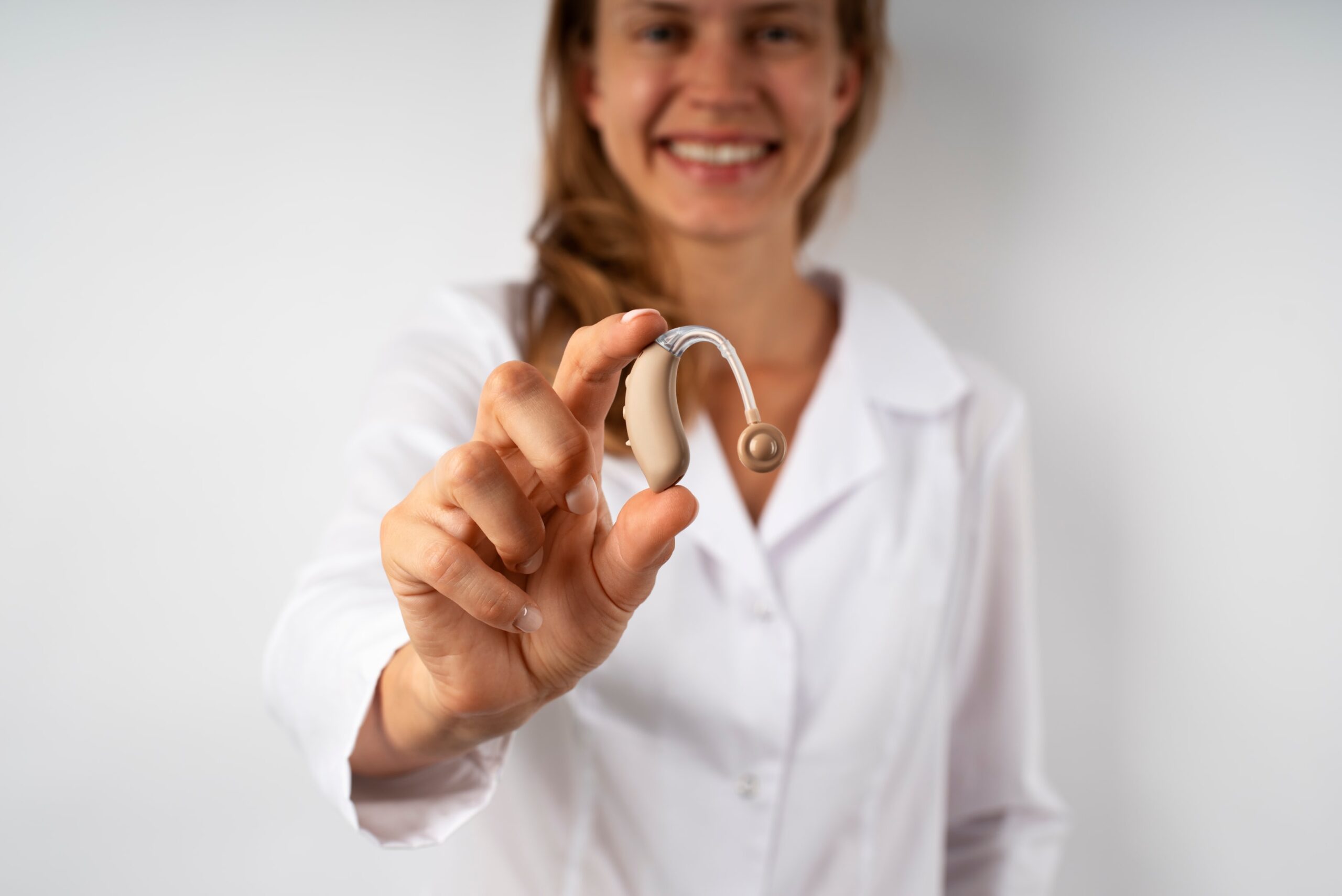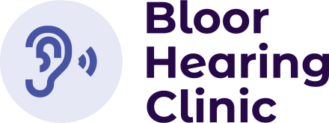
Our Blog
Your Guide to Modern Hearing Aid Technology 2025

Hearing aids have come a long way over the past decade. Once bulky and basic, today’s hearing devices are packed with advanced technology that enhances sound quality, reduces background noise, and seamlessly integrates with your digital life.
If you’re exploring new hearing aids for the first time or upgrading from an older model, this guide is for you. We’ll take an in-depth look at the modern hearing aid technology available in 2025, including hearing aids at Bloor Hearing Clinic, and help you find the right device for your needs.
Features You’ll Find in the Latest Hearing Aids
The latest hearing aids serve as amplifiers, but mostly as smart medical devices that incorporate modern technology to address a wide range of listening challenges. The focus today is not just on better hearing, but on improving comfort, usability, connectivity, and overall hearing health through advanced technology.
Recent breakthroughs have shifted the hearing aid landscape toward personalized hearing that adapts dynamically to a user’s environment and preferences. Here’s a breakdown of the features shaping modern hearing aid technology in 2025.
AI Capability
Artificial intelligence (AI) and machine learning algorithms are now core features in digital hearing aids. These systems analyze complex sound environments in real time, identifying speech, filtering out background noise, and adjusting settings automatically based on the user’s habits and surroundings.
These adaptive systems do more than just make global volume changes. They are also meant to:
Fine-tune hearing aid performance for specific voices and tones
Adjust compression ratios, directional focus, and noise suppression parameters without user input
This results in a more natural listening experience, especially in crowded environments like cafés or social events. Leading aid manufacturers also use machine learning to allow the device to “learn” over time, improving its response to each user’s unique preferences.
App Functionality
Mobile aid apps are now an essential part of the user experience. These apps, often compatible with both iOS and Android, let users control volume, program settings, and sound directionality from their smartphones. More advanced features include geotagged sound profiles that automatically activate specific settings in familiar places, like quiet mode at home or a speech-focused mode at work.
In addition, many apps now include health tracking capabilities, such as:
Monitoring users’ physical activity
Detect patterns in aid use
Review battery status or maintenance needs
These integrations represent a growing push toward whole-person care, especially for older adults who may already rely on smartphones for managing other health data.
Auracast Capability
Auracast™ broadcast audio is one of the most notable additions to modern hearing aid technology in 2025. As part of the Bluetooth LE Audio standard, Auracast enables hearing devices to receive audio directly from public venues like airports, churches, or cinemas. This transforms shared listening environments by eliminating reliance on hearing loops or neck-worn transmitters.
Auracast support empowers Bluetooth-enabled devices to deliver clearer, latency-free sound directly to the user, regardless of where they’re seated. This inclusion is especially useful for users with moderate to severe hearing loss, offering more equitable access in public settings.
Better Connectivity
Bluetooth technology has become standard in most modern hearing aids, allowing users to stream audio directly from other devices: phones, TVs, laptops, and more. The latest hearing aids often support simultaneous connectivity to multiple devices and faster pairing, providing a seamless listening experience across digital ecosystems.
Over 70% of consumers prefer hearing aids with Bluetooth connectivity. These users now expect their hearing aids to work seamlessly with smartphone apps, letting them stream audio, manage settings, and even get updates remotely via their phone.
Better Dust Resistance
More aid manufacturers are designing hearing aids to meet IP (Ingress Protection) ratings for dust resistance, a key feature for users exposed to outdoor elements or dusty indoor conditions. These improvements protect internal circuitry from fine particles that can affect performance over time, particularly for aids worn behind the ear.
Better Noise Cancellation
Modern noise reduction systems go beyond basic sound suppression. Using adaptive filtering and directional microphones, today’s aids can dynamically differentiate between speech and ambient noise, reducing distractions while preserving vocal clarity. Some models even let users adjust the aggressiveness of noise cancellation in real-time via app controls.
This is important in noisy environments like restaurants, where the ability to focus on a single voice without overwhelming amplification significantly improves comfort and understanding.
Better Sound Processing
Sound processing technology has seen major strides. Today’s hearing aids can sample audio input at higher rates, resulting in clearer, more accurate reproduction of speech and environmental sounds. These enhancements reduce distortion and latency, even during fast transitions between listening environments.
Multi-channel processing also allows for more targeted amplification of specific frequencies, especially important for those with high-frequency hearing loss.
Better Speech Processing
Improved speech enhancement algorithms make it easier to hear conversations in complex environments. The latest devices use spatial awareness and directional microphones to focus on the person speaking in front of you while suppressing off-axis sounds. Some models even use AI to predict and enhance conversational speech patterns, improving clarity in real-time.
This is beneficial for individuals with age-related or sensorineural hearing loss, where speech perception tends to degrade before volume perception.
Better Tinnitus Management
With tinnitus affecting roughly 15%–20% of adults, many new hearing aids now include customizable tinnitus relief programs. These programs use masking sounds, like white noise, ocean waves, or soft ambient tones, that can be tailored through the companion app. Some also employ sound therapy principles backed by audiological research to reduce the brain’s perception of ringing over time.
📚 Helpful Article: Tinnitus can get worse if not treated or managed. Hearing aids help tinnitus become less evident by amplifying external sounds, shifting your focus away from perception. |
Better Water Resistance
Water resistance is another critical area of advancement. Many rechargeable hearing aids are now IP68-rated, which means they can withstand brief immersion in water and are fully protected against sweat and rain. This provides peace of mind during workouts, accidental splashes, or even high-humidity conditions.
Fitness Tracking
Several models now offer built-in motion sensors that track physical activity, such as step count or daily movement patterns. This is useful for older adults looking to monitor their overall wellness. These sensors also enable intelligent features like automatic mode switching when a user is walking versus sitting still.
Hands-Free Calls
Support for hands-free phone calls is no longer limited to premium devices. Integrated microphones and Bluetooth connectivity allow users to answer, talk, and hang up calls with simple gestures or voice commands. This functionality reduces reliance on smartphones, which is helpful when multitasking or engaging in outdoor activities.
Longer Battery Life and Faster Charging
Rechargeable batteries are standard now, with most rechargeable hearing aids lasting all day on a single charge.
Most rechargeable hearing aids now offer 18–30 hours of battery life on a single charge, depending on streaming and usage. Faster charging is a standout feature in 2025, with some devices achieving 50% charge in under 20–30 minutes and full charge within 2–3 hours. USB-C charging and portable charging cases are also increasingly common, supporting the use of aids on the go.
More Customization Options
Modern hearing aids now support extensive customization through companion aid apps, empowering users to fine-tune their hearing experience in ways that were not possible a decade ago. From equalizer settings to location-based profiles, users can tailor how their aids respond in different sound environments, such as boosting speech clarity in a crowded restaurant or softening loud sounds in a concert hall.
Some apps even allow you to create personal sound presets, making it easier to switch between work, home, and outdoor modes with a single tap. Advanced settings also include:
Feedback cancellation strength
Wind noise suppression
Microphone directionality
These tools help users get closer to a natural listening experience, regardless of their level of hearing loss.
More Discreet (Invisible)
Invisible hearing aids have evolved significantly in recent years. Thanks to miniaturization and smarter internal components, many digital hearing aids are now virtually invisible when worn—either fitting completely within the ear canal (invisible-in-canal, or IIC) or designed to sit behind the ear with slim tubing that’s barely noticeable.
Despite their small size, these modern hearing aids still pack a significant amount of aid technology, including wireless streaming, noise reduction, and rechargeable batteries. This combination of performance and discretion is important for users who want to maintain a low profile without compromising on functionality.
Motion Sensors and Tap Controls
The latest hearing aids often come with built-in motion sensors that detect when you’re walking, sitting, or running, allowing the device to automatically optimize settings based on your physical activity. For example, while walking in a busy city, your hearing aids might widen directional focus to capture surrounding sounds, helping you stay aware of your environment.
Tap controls add another layer of convenience. With a double-tap to the ear or behind-the-ear unit, users can answer phone calls, pause streaming, or switch between programs. These intuitive gestures minimize the need to access a phone or app, especially helpful during exercise or while your hands are full.
Streaming Services
Modern hearing aid technology now includes seamless integration with popular streaming services like Spotify, YouTube, and Apple Music. Audio is streamed directly to your hearing aid via Bluetooth connectivity, offering synchronized, high-fidelity sound that’s adjusted to your hearing health profile.
This means no more struggling to understand dialogue in podcasts or missing instruments in your favorite music. This is convenient if you’re watching videos, attending webinars, or listening to music. Hearing devices now function much like high-end earbuds, while still supporting features like feedback cancellation and speech optimization.
Telemedicine Functionality
Remote support has become standard across much of the hearing aid industry in 2025. Many Bluetooth-enabled devices now support telemedicine functionality, allowing hearing instrument specialists or experienced audiologists to fine-tune your devices remotely.
Through encrypted smartphone apps, clinicians can do these processes without users needing to visit a clinic:
Run diagnostics
Push firmware updates
Adjust gain settings
Troubleshoot issues
This feature is valuable for those living in rural areas, those with mobility challenges, or anyone looking for faster follow-up care. It also helps ensure consistent hearing aid performance over time, even as hearing needs evolve.
How To Choose the Best Hearing Aid for You
Modern hearing aids offer advanced features, but that doesn’t mean you need all of them. The best choice depends on your hearing health, lifestyle, and daily routine.
Start by identifying what matters most to you.
Do you want clearer speech in meetings or social settings?
Do you need to stream audio from your phone, TV, or other Bluetooth-enabled devices?
Are you active and looking for fitness tracking or motion sensors?
Do you spend time in noisy environments where noise reduction matters?
Do you want discreet or virtually invisible hearing aids?
Do you prefer rechargeable batteries over regular replacements?
Are hands-free calls or streaming services a must for you?
Would you benefit from telehealth support through your smartphone?
Some users benefit more from a strong feedback canceller or improved noise reduction in crowds. Others prioritize Bluetooth connectivity, rechargeable batteries, or telemedicine functionality.
The right fit starts with the right support. Meet with a qualified audiologist or hearing instrument specialist. They will assess your level of hearing loss, walk you through your options, and help you try different devices. A proper fitting ensures better aid performance and comfort in real-world settings.
New features are transforming hearing aids into smart, personalized tools. Many are now virtually invisible, customizable, and easy to adjust through aid apps. Some even come with health data tracking and AI-driven sound adjustments.
Take your time. Ask questions. Focus on the features that match your needs. The right hearing aid technology will improve how you hear and live.
We’ve created a quick checklist to help you out and make better decisions:
☐ Clear speech in crowds or meetings
☐ Strong noise reduction and ambient noise control
☐ Streaming audio from phone or tablet
☐ Rechargeable batteries and fast charging
☐ Virtually invisible or behind-the-ear design
☐ Fitness tracking and health data
☐ Hands-free calling and tap controls
☐ Remote adjustments via telemedicine
☐ Custom sound profiles for different environments
☐ Compatibility with streaming platforms
Bring this checklist when you meet your hearing care provider. It helps focus the discussion and find the best hearing aid for your needs.
Conclusion
Modern hearing aids support more than hearing. They improve daily life, comfort, and connection. The latest hearing aid technology in 2025 integrates with your daily life, supports overall hearing health, and offers a significant amount of personalization. If you’re new to aid use or exploring emerging trends in the hearing aid industry, the latest hearing aids provide more control, clarity, and confidence than ever before.
